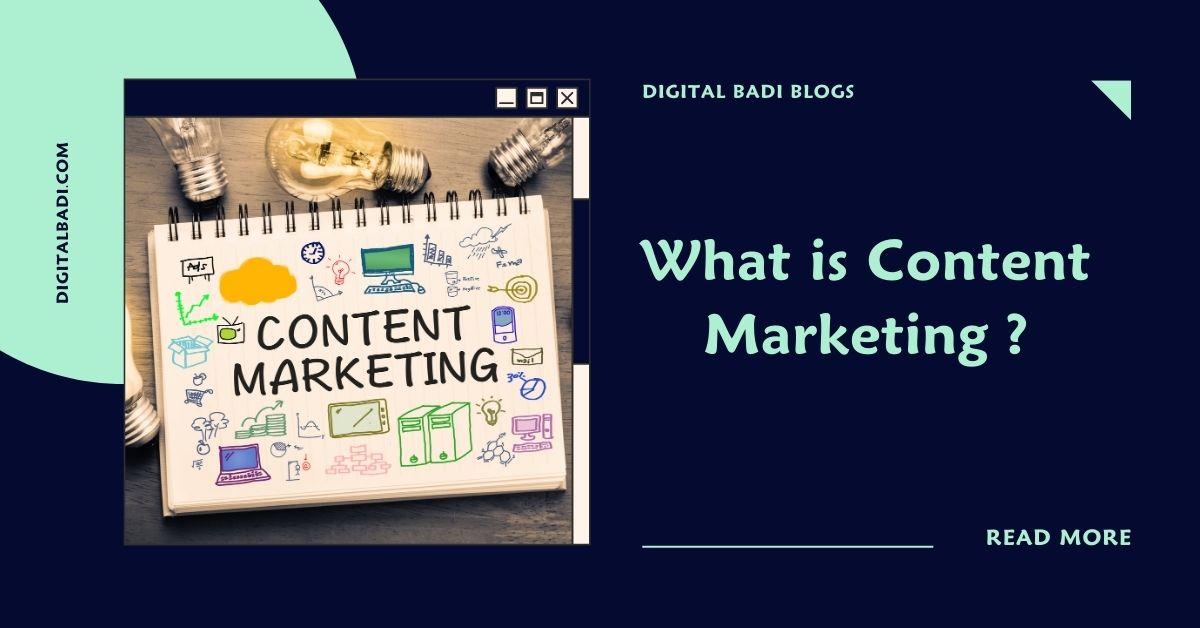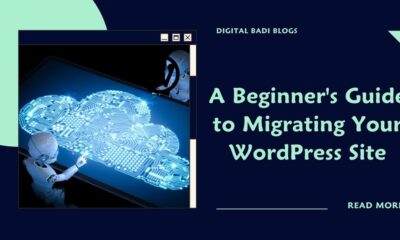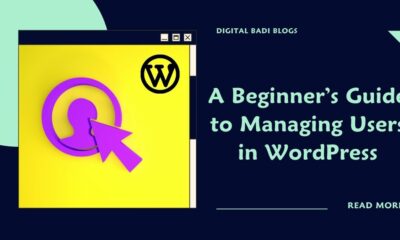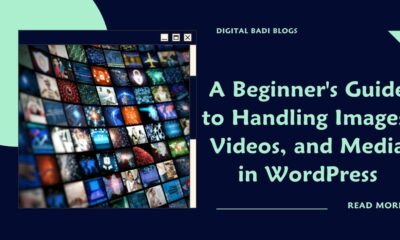Modules of Digital Marketing
Content Marketing Explained: An Actionable Guide for Beginners

Table of Contents
What is Content Marketing
Hey everyone, John here again! In previous posts we covered SEO, SEM, and social media marketing essentials. Today I want to tackle another vital digital marketing channel – content marketing.
What is Content Marketing: Is a marketing strategy used to attract, engage, and retain an audience by creating and sharing relevant articles, videos, podcasts, and other media. This approach establishes expertise, promotes brand awareness, and keeps your business top of mind when it’s time to buy what you sell.
If you have a business website or blog, you need a content strategy. High quality, valuable content attracts and engages audiences to drive site growth and conversions. But what exactly is content marketing and how do you succeed with it?
In this post, I’ll explain what content marketing entails, why it’s important, and provide an actionable framework to implement a successful content strategy for your brand. Let’s dive in!
What Is Content Marketing? A Simple Definition
Let’s start with a basic working definition:
Content marketing is the process of consistently creating, curating, and distributing valuable, relevant, and compelling content to attract and engage a clearly defined audience. The goal is to drive profitable action for your business.
In simpler terms, content marketing means creating ongoing informational, educational, or entertainment content and sharing it online to organically draw more people to your brand over time.
This inbound content acts as a magnet, pulling your ideal audiences toward your products, services, and solutions. The content itself aims to address pain points, interests, and needs of those you serve.
The Value Proposition of Content Marketing
Many businesses are uncertain if content marketing is really worth the investment. Why create content when you could just pay for ads?
Here are some key reasons content should be central to your digital marketing efforts:
- Builds authority and trust – Consistently sharing high-value content positions your brand as an authority, trusted advisor and industry leader.
- Improves SEO – Unique, optimized content signals search engines to rank your pages higher in results. This increases organic traffic to your site.
- Generative more leads – Compelling content gets prospects to raise their hand and convert into leads through calls-to-action.
- Nurtures prospects – Content libraries guide prospects through the buyer’s journey to become customers over time.
- Boosts customer retention – Existing customers receive ongoing value rather than one-time transactions.
- Reduces marketing costs – Content pulls audiences in rather than needing to pay constantly for outbound promotion.
- Drives more sales – Ultimately detailed, informative content persuades prospects to purchase.
Simply put, content marketing powers a self-sustaining engine of perpetual growth. It should form the foundation of your overall inbound strategy.
Elements of an Effective Content Marketing Strategy
Now that you understand the immense value of content marketing, let’s explore the key elements that comprise an effective content strategy.
Audience Personas and Insights
The first step is developing detailed buyer personas – semi-fictional representations of your target customers based on market research and real data.
Build personas aligned to your brand including demographic and psychographic details. Then use these profiles to shape content that resonates.
Audit of Existing Content
Conduct an audit of your current website content. Identify strengths, weaknesses, gaps, redundancies, and content needing refreshed. This informs the creation of new assets.
Keyword Research
Do thorough keyword research to identify topics, phrases, and questions your audience is searching that relate to your products and services. Base content on high-potential keywords.
Content Pillars and Calendar
Define the main content pillars and categories that align to your products/services, audience interests, and funnel. Plot out upcoming content in an editorial calendar.
Variety of Content Formats
Develop a diverse mix of content assets – blog posts, videos, tools, guides, webinars, social posts, infographics, and more. Different formats appeal to different learners.
Documented Content Process
Outline your end-to-end content creation, production, optimization, distribution, and promotion processes in a documented content workflow.
Promotional Strategy
Map out how you will consistently promote and share content across all marketing, sales, email, social media, PR, and external channels. Promotion fuels discovery.
Analytics Framework
Determine key metrics and KPIs to track content performance across website traffic, leads, sales, social engagement, and ROI. Continuously optimize based on data.
Planning and mapping these core components leads to a high-performance content engine. Now let’s look at how to put it into action.
How to Get Started with Content Marketing
If you’re new to content marketing, here are some best practices to kickstart your efforts:
Start Creating Content
Don’t overthink or overplan early on. Start creating and sharing blog posts, videos, and other accessible content. You will refine processes over time.
Commit to a Consistent Cadence
Determine the regular content production schedule you can maintain long-term – daily, multiple times per week, weekly, etc. Then stick to it. Consistency is key.
Focus on Quality Over Quantity
Don’t fall into the trap of churning out low-quality content just to hit volume metrics. Take the time to craft remarkable, useful content.
Optimize Website User Experience
Make it easy for visitors to find and consume content through navigation, calls-to-action, page design, loading speed, and mobile responsiveness.
Promote, Repurpose, and Recycle
Develop a content promotion process. Repurpose content into multiple formats. Re-share evergreen performing content. Exploit each asset.
Monitor Analytics Closely
Analyze performance data, engagement, and conversions to identify your best content. Double down on what resonates to replicate success.
Approach content marketing as an ongoing optimization process. Maintain a test and learn mindset as you refine your strategy.
Developing a High-Performing Blog
For most brands, blogging forms the crux of a content marketing strategy. Your blog provides value while capturing emails and generating leads. Here are some tips for blog success:
Post Consistently
Publish new blog content regularly per your planned cadence. Erratic posting leads to declining readership.
Write Compelling Headlines
Spend time crafting catchy, compelling titles and meta descriptions that hook readers and boost clicks.
Focus on Reader Value
Always craft posts aimed at helping readers. Avoid overt brand plugging and focus on useful information.
Include Visuals
Break up paragraphs with relevant photos, graphics, videos, gifs, and illustrations. Visuals boost engagement.
Write Long-Form Content
In-depth, detailed blog posts over 2,000 words perform best for SEO and conversion rates. Go deep on topics.
Promote New Content
Share each new blog post across all social channels, email lists, paid ads, influencers, and other external venues.
Invest time in crafting remarkable blog content tailored to what your audience wants to read. Your blog can become a lead generation workhorse.
Driving Leads Through Content Offers and CTAs
While high-value content is invaluable, your strategy must also compel visitors to convert into leads:
Offer Lead Magnets
Create free downloadable content like guides, templates, tools, and ebooks in exchange for a lead’s email address.
Gate More Detailed Content
Present deeper content like webinars, demos, premium articles etc. behind lead capture forms.
Include Clear Calls-to-Action
Every page and post should include clickable calls-to-action to drive conversions into leads and sales.
Provide Social Proof
Display testimonials, customer reviews, case studies and other social proof to provide confidence in offering value.
Share Lead Forms Prominently
Place email signup, contact, and lead gen submission forms above the fold near top of pages for visibility.
Compelling content combined with clear conversion paths results in more inbound leads and customers.
Promoting Your Content for Maximum Impact
Even exceptional content will fall flat without promotion. You must relentlessly share new and evergreen content across channels:
Email Marketing
Send content links through your email lists with targeted segmentation and scheduling for opens. Email delivers content best.
Organic Social Posting
Share content natively on all your brand social accounts. Engage fans and followers.
Paid Social Ads
Run ads on platforms like Facebook and LinkedIn to get content in front of targeted new audiences.
Influencer Marketing
Activate influencer partners, ambassadors and loyal fans to share content to their networks through discounts or rewards.
Guest Posting
Publish relevant content on industry websites, blogs and aggregators that accept guest contributions to expand reach.
Content Partnerships
Pursue strategic partnerships with complementary brands to cross-promote content and expand distribution.
Amplify content promotion through both owned and external channels. Repurposing and resharing evergreen content also extends the return on investment of each piece.
Tracking Content Marketing Performance
To refine your strategy, diligently analyze key performance indicators (KPIs) for each content asset:
Traffic
Measure unique pageviews generated by individual content along with site visitors driven. This indicates interest and reach.
Engagement
Gauge overall time on site/page, repeat visitation, click depth, shares, comments and downloads for each content piece. Higher is better.
Conversions
Track email signups, leads, sales, and other conversions produced by specific content assets. Tie revenue data to content when possible.
Backlinks
Monitor any new backlinks earned by content as an indicator of quality and value. More backlinks signals greater authority.
ROI
Ultimately calculate content return on investment by comparing production costs to tangible business value delivered in the form of leads and revenue.
Analyze metrics in your analytics platform and segment by content piece. Then double down on what performs and improve underperforming areas.
Common Content Marketing Pitfalls to Avoid
As you execute your content strategy, beware of these common missteps that sabotage success:
Inconsistent Posting Cadence
Don’t let your content output wax and wane. This loses built momentum. Maintain a steady stream of content per your predetermined schedule.
Focusing on Quantity Over Quality
Avoid churning out low-value blog filler or content unrelated to audience interests just to hit volume numbers. Prioritize remarkable content.
Not Promoting Enough
You must aggressively promote each piece of content across all possible channels to maximize exposure. Lack of promotion severely limits reach.
Ignoring Performance Data
Failing to monitor analytics, engagement, and conversion metrics cripples your ability to determine what works and what doesn’t. Optimizing based on data is critical.
Getting Distracted by Fads
Stick to proven evergreen content formats that work rather than chasing every hot new content trend or channel. Stay focused on fundamentals.
Maintain a laser focus on creating, optimizing and promoting the best content for your audience’s needs. Keep learning and improving based on performance.
Continued Evolution and Improvement Wins
That wraps up my complete guide to crushing it with content marketing! As you can see, effective content strategy requires an ongoing commitment to creation, curation, optimization and promotion.
But the long-term rewards make it well worth the effort and investment:
- Increased organic website traffic
- Surge in high quality sales leads
- Higher brand visibility and authority
- Deeper customer relationships and loyalty
- More inbound sales at lower acquisition costs
Content builds trust. Trust drives results.
Hopefully this post provided clarity on what content marketing entails along with an actionable game plan for your brand. Feel free to reach out if you need any specific advice!
Now get out there and starting attracting your ideal audiences with magnetizing content. You’ve got this!
If You are Looking for Best Digital Marketing Training Institute in Hyderabad.
Digital offers Best Digital Marketing Course in Telugu and English Languages.
John is a Digital Marketing Trainer and Blogger and YouTube creator with 5+ years work experience in digital marketing field. He is the founder of Digital Badi.
Modules of Digital Marketing
Unlocking the Power of Excel for Digital Marketing

Table of Contents
Excel for Digital Marketing
Hey everyone! John here again, digital marketing expert and founder of Digital Badi. In previous posts we covered all aspects of digital marketing – SEO, content, social, email, paid ads and more.
But today I want to talk about an unflashy yet incredibly useful tool for marketers – Microsoft Excel.
Excel for digital marketing:some of the most common uses of Excel within digital marketing include: Analyzing web statistics. Analyzing audience metrics. Analyzing ROI within campaigns and advertisements
While Excel may seem boring compared to all the latest buzzworthy marketing tech, it remains one of the most versatile and valuable tools in a digital marketer’s toolkit. Its robust functionality allows manipulating data in ways that provide tangible insights.
In this post, I’ll explain what Excel is, why it’s useful for marketers, some of the key ways it can be applied, and tips for using it effectively. Let’s shed some light on this under-appreciated digital marketing workhorse!
What is Excel and Why Use It for Marketing?
For those completely new to spreadsheets, Excel is a software program that allows organizing, calculating, analyzing and visualizing data in tables with rows and columns.
Excel makes it easy for marketers to:
- Organize complex data sets into structured tables that can be filtered and manipulated
- Perform calculations like sum, average, percentages across multiple metrics
- Analyze data sets using sorting, pivots and charts to uncover insights
- Easily create visualizations like graphs and dashboards to illustrate trends
- Automate repetitive analysis tasks through macros to save time
- Collaborate with others and combine data sources into master data sets
The ability to take raw marketing data and derive actionable conclusions is incredibly valuable.
Key Marketing Applications of Excel
Exactly how can marketers apply the power of Excel most effectively? Here are some of the most impactful applications:
Data Cleansing and Organization
Prepare raw marketing data for analysis by:
- Combining disparate datasets into unified tables
- Removing duplicates
- Fixing formatting inconsistencies
- Adding/deleting unnecessary columns
- Filtering to refine your dataset
Campaign Performance Analysis
Review campaign metrics to identify trends and optimization opportunities:
- Pull data from analytics platforms into Excel
- Calculate KPIs like CTR, conversion rate, ROI
- Aggregate data across campaigns
- Filter and segment data by source, ad sets, placements etc.
- Create visualizations like line graphs showing performance over time
Audience Analysis
Analyze audience data to refine customer targeting:
- Build audience profiles based on attributes like demographics, interests and behaviors
- Identify high-value customer cohorts based on common attributes
- Filter data to isolate key audience segments
- Visualize audience data comparisons through graphs
Budget and Spend Optimization
Manage marketing budgets and spend efficiently by:
- Tracking budgets across campaigns, channels and months
- Calculating monthly and YoY spend by area
- Creating forecasts and remaining budgets
- Modeling different budget allocation scenarios
- Building spend dashboards with graphs and visual indicators
Content Performance Analysis
Evaluate content metrics to optimize content creation:
- Track volume, engagement and conversion data for different content
- Calculate conversion rate, social shares per post
- Rank content by performance metrics
- Illustrate trends using charts
- Filter top and bottom performing pieces for further analysis
A/B Testing Analysis
Analyze A/B test results to identify winning variants:
- Import test data from dedicated tools or analytics platforms
- Identify statistical significance to determine if differences are real
- Filter and segment by demographic factors like location or device
- Visually illustrate performance differences between variants
- Analyze changes over the testing period to watch for trends
There are so many ways Excel provides tangible, quantitative insights to refine your marketing.
Tips for Using Excel Effectively for Marketing
Follow these tips to maximize the value from using Excel for your marketing analysis needs:
- Learn keyboard shortcuts – Shortcuts speed up navigation and task efficiency.
- Use absolute and relative cell references – Easily copy formulas without breaking references to other cells.
- Name cells/ranges – Improve readability and formulas by naming cells rather than using cell addresses.
- Use conditional formatting – Highlight cells based on value thresholds for quick visual analysis.
- Filter tables – Temporarily hide irrelevant data to focus on what matters.
- Learn basic formulas – SUM, AVERAGE, COUNT, VLOOKUP, IFERROR etc. perform powerful analysis.
- Create interactive dashboards – Use forms, buttons, dropdowns and macros to build interactive dashboards.
- Use pivot tables – Quickly reorganize, group and summarize data for insights.
Don’t let Excel intimidate you. Start small and grow your skills over time. It’s a journey well worth taking!
Key Takeaways for Applying Excel to Marketing
Here are some core lessons on harnessing the analytics power of Excel:
- Start with well-structured, clean datasets for reliable analysis. Garbage in, garbage out!
- Use Excel and other BI tools in tandem. Excel augments dedicated marketing platforms.
- Build reusable templates and dashboards that pull data dynamically for quick insights each period.
- Focus on analyzing actionable data that will impact marketing decision making. Avoid paralysis by analysis.
- Excel knowledge compounds over time. Invest in continuously developing your skills through content and practice.
- Don’t underestimate the impact Excel mastery can have on your marketing analytics capabilities.
Excel remains one of the most indispensable tools in a savvy digital marketer’s toolkit. I hope this post provided some clarity on how to start applying it. Let me know if you have any other Excel-related questions!
Now get out there and start using data to take your marketing to the next level. The insights are waiting!
Contact Us to Learn Digital Marketing Course in Hyderabad.
Call to this Number : +91 9059329297
John is a Digital Marketing Trainer and Blogger and YouTube creator with 5+ years work experience in digital marketing field. He is the founder of Digital Badi.
Modules of Digital Marketing
What is Email Marketing: A Complete Guide for Beginners

Table of Contents
What is Email Marketing: A Complete Guide for Beginners
Hey everyone! John here, back again with another post in my in-depth digital marketing series. So far we’ve covered all aspects of marketing strategy, content, SEO, social media, paid ads and more.
Now I want to focus on the channel that consistently drives the highest return on investment across all marketing efforts – email.
What is Email marketing: remains an extremely effective way to engage audiences while also building relationships and driving conversions over time. In this post, I’ll provide a comprehensive yet beginner-friendly guide to email marketing success. Let’s do this!
What is Email Marketing?
Let’s start simple – email marketing refers to sending commercial messages to a list of subscribers or customers via email in order to promote your brand, products or services.
This includes:
- Collecting email addresses through opt-in forms
- Sending promotional emails like announcements, newsletters etc.
- Automating personalized email workflows and segments
- Integrating email with other marketing channels
- Measuring performance through open rates, clicks etc.
- Refining based on insights around subscriber engagement
The goal is to drive brand awareness, engagement, conversions, and loyalty through ongoing helpful email communications.
The Value Proposition of Email Marketing
So why invest in building your email marketing capabilities? Consider these powerful advantages:
- Extremely high ROI – Email averages over $42 return for every $1 spent, the highest of any marketing channel.
- Expanded reach – Build an owned audience outside of any one platform.
- Increased engagement – Messages directly hit the inbox, no algorithm or noise.
- Brand building – An email nurtures relationships and trust over time.
- Traffic driver – Strategic email campaigns direct visitors back to your site.
- Powerful automation – Sending triggered, personalized emails at scale.
- Granular analytics – Open and click tracking provide data to optimize.
- Cost efficient – Low overall cost to create and send emails at scale.
With the right strategy, email marketing delivers tremendous upside.
Key Steps for Email Marketing Success
If you’re ready to leverage the power of email, here is a proven framework:
Set Clear Goals
Define what you want to achieve – build awareness? Generate traffic? Capture leads? Reduce churn? Drive sales? Goals inform strategy.
Grow Your List
Offer compelling lead magnets in exchange for emails, capture at checkout, import existing customer lists. Continuously expand your database.
Segment Your Subscribers
Divide contacts into groups like customers, inactive subscribers, prospects etc. Personalize emails based on interests, actions and demographics.
Design Great Content
Create valuable, relevant, engaging content. Well-designed email newsletters, promotional messages, autoresponder workflows.
Automate Campaigns
Set up sequences like post-purchase follow-ups, re-engagement flows for inactive users, lead nurturing.
Integrate With Your Site
Install tracking pixels, link email to landing pages. Ensure cohesive experiences across channels.
Analyze Performance
Review open rate, click through rate, bounce rate, unsubscribers, revenue driven. Optimize and improve over time.
Check back on these fundamentals consistently for email success.
Crafting Compelling Email Content
Email content plays a major role in engagement and conversions. Here are proven tips for creating emails your audience loves opening:
Offer Exclusive Value
Special deals, early access, discounts, or content available only to email subscribers.
Write Catchy Subject Lines
Subjects should create curiosity, urgency, or provide value. A compelling subject boosts open rates.
Make Content Scannable
Use concise paragraphs, bullet points, bolded text, images, and white space for skimmability.
Focus on Benefits
Clearly explain how you solve problems or improve lives rather than features.
Use High-Quality Visuals
Include images, gifs, videos and graphics to visually engage readers.
Personalize Where Possible
Include first names, location, purchase history etc. to make emails more relevant.
Write Like a Human
Adopt a conversational tone. Don’t be overly salesy. Build a relationship with subscribers.
Make it Mobile Friendly
Test emails rigorously across mobile devices. Optimize layout and CTAs for small screens.
Email design, personalization and value drive open rates, engagement, and ultimately conversions.
Email Automation Workflows to Nurture Subscribers
Beyond one-off emails, marketing automation takes your efforts to the next level. Here are powerful types of automated email workflows to create:
Welcome Series – Post sign-up as an introduction to your brand, content, and products.
Re-engagement – Win back inactive subscribers with special offers.
Behavioral Triggers – Send based on actions – cart abandonment, feature usage, new content etc.
Event Follow Ups – Recap event attendance, gated content access or purchases.
Surveys – Ask for feedback on their experience with your brand, content, or products.
Appointment Reminders – Remind of upcoming appointments, expiring trials etc. via timely emails.
Cart Abandonment – Offer discounts and perks to users who left items in their cart.
Milestones – Acknowledge anniversaries, loyalty status, referrals etc.
Workflows nurture subscribers based on their interactions over time.
Promoting Your Emails to Increase Exposure
To maximize reach and engagement, actively promote new email content across channels:
- Share an email signup form on your site, social media, and other platforms. Offer an incentive like a discount or exclusive piece of content in exchange for subscribing.
- Post snippets of informative or entertaining content from email newsletters on social media to provide a preview.
- Show recent emails or testimonials in site headers/footers with a subscription form to capture more emails.
- Mention the value subscribers get from your emails in any guest articles, Q&As or interviews. Include a CTA to subscribe.
- Repurpose top performing email content into blogs, social posts, ads.
- Share links to your latest emails in relevant groups and communities.
Expanding exposure drives more signups and engagement with your existing emails. Promote aggressively but don’t spam.
Key Email Marketing Metrics to Track
To refine your email approach, diligently track:
- Open rate – Percentage of recipients opening your emails
- Clickthrough rate – Clicks on links and CTAs within emails
- Bounce rate – Emails “bouncing” due to invalid addresses. Keep below 5%.
- Unsubscribe rate – Monitor opt-outs to identify poor content. Below 0.5% is solid.
- List growth – Growing your list expands your audience reach.
- Engagement funnel – % who open emails, click, convert after clicking.
- Sales revenue – Ecommerce brands can track revenue from email clicks directly in tools like Mailchimp.
Regularly analyzing performance identifies areas for optimization and provides accountability.
Common Email Marketing Pitfalls to Avoid
Here are some key mistakes that sink email success:
- Buying email lists – Illegally spamming purchased lists tanks deliverability. Grow organically.
- Sending too frequently – Don’t flood inboxes. Send only high quality, helpful content on an ideal cadence for your audience.
- Putting email on autopilot – Consistently refine based on open and clickthrough rates.
- Not tracking analytics – Key data like opens, clicks, unsubscribes, drive growth.
- Poor subject lines – Vague or misleading subjects increase bounces and opt-outs.
- Overstuffing copy – Limit copy to increase scannability with images, spacing, and formatting.
- Neglecting mobile – Don’t forget over half of emails are opened on mobile now. Simplify.
With the right focus on providing subscriber value in a thoughtful cadence, email drives significant ROI. Avoid common mistakes through constant testing and optimization.
That wraps up my complete guide to crushing it with email marketing! Let me know if you have any other questions. I’m happy to help further demystify one of the most effective yet underutilized marketing channels.
Now get out there and start connecting with your audiences in their inbox!
Contact Us to Learn Digital Marketing Course in Hyderabad.
Call to this Number : +91 9059329297
John is a Digital Marketing Trainer and Blogger and YouTube creator with 5+ years work experience in digital marketing field. He is the founder of Digital Badi.
Modules of Digital Marketing
What are Web Analytics: A Beginner’s Guide

Table of Contents
What are Web Analytics:A Beginner’s Guide
Hey everyone! John here again, digital marketing expert and founder of Digital Badi. In previous posts we covered all aspects of digital marketing – SEO, content, social, email, paid ads and more.
But none of those tactics matter if you can’t measure their impact. That’s where web analytics comes in. Analyzing performance data is absolutely crucial for digital marketing success.
What are Web analytics is the process of analyzing the behavior of visitors to a website. This involves tracking, reviewing and reporting data to measure web activity
In this post, I’ll provide an in-depth yet beginner-friendly guide to leveraging web analytics. We’ll cover what it is, why it matters, types of analytics, key performance indicators, tools of the trade, and common mistakes to avoid. Let’s dive in!
What Exactly is Web Analytics?
Let’s start simple – web analytics refers to the collection, measurement, analysis and reporting of website and app data to understand online visitor behavior and activity.
Typical web analytics provide insights into:
- Traffic volume and sources
- Visitor actions, clicks and conversions
- Acquisition channels driving growth
- Landing pages and campaigns generating results
- User experience obstacles
- ROI of initiatives
Essentially, analytics help you interpret the data to optimize your online presence and marketing.
Why Web Analytics Matter
You might be wondering – why should I bother with analytics? Just trust that my site and marketing are working fine, right?
Wrong. With comprehensive analytics, you gain:
- Informed decision making – Identify high-performing channels and initiatives to double down on.
- Performance tracking – Monitor progress against key growth and revenue goals.
- Optimization – Isolate problem areas hurting conversion to improve.
- Accountability – Quantify marketing ROI and impact on business.
- Competitive insights – See where competitors are getting traction.
- Audience insights – Discover more about your visitors and buyers.
- Automation – Trigger actions based on data to nurture visitors.
Solid web analytics provide the visibility required to maximize results.
Key Types of Analytics to Track
Now let’s explore the primary categories of analytics to focus on:
Site Analytics
This includes your overall website traffic volume, sources, visitor actions, conversions, acquisition channels, landing pages, and campaigns driving growth.
Platforms like Google Analytics offer robust site analytics.
Marketing Campaign Analytics
Dive deeper into performance metrics for individual marketing campaigns across channels like email, paid search and social.
Evaluate impressions, clicks, conversions, cost per conversion, ROI.
Content Engagement Analytics
Look at metrics like pageviews, time on site or page, bounce rate, scroll depth and conversions for blog posts, tools and other content assets.
Identify your best performing content to optimize.
Social Media Analytics
Review followers, likes, shares, comments, clicks, engagement rate and overall reach across social platforms.
Informs your ongoing social strategy.
Mobile and App Analytics
Consider key metrics around mobile vs desktop performance, app installs, adoption, retention, feature usage and more.
Essential for optimizing mobile initiatives.
Track each of these layers to get a complete performance picture.
Key Website KPIs and Metrics to Track
Within your overall analytics, pay close attention to these critical website KPIs:
Traffic
- Sessions, visitors, pageviews
- New vs returning visitors
- Traffic sources – direct, referral, organic, social, email
Acquisition
- Volume from each marketing channel
- Channel ROI – revenue driven vs spend
- Campaign/initiative ROI
Behavior
- Pages visited per session
- Average session duration
- Bounce rates
- Shopping cart additions vs abandonment
Conversions
- Form fills, signups, purchases
- Email list growth
- Contact or call volume
- Chat engagement
Custom Goals
- Set custom goals to track important site actions unique to your business.
Consistently analyzing this data enables insightful, metrics-driven marketing decisions.
Top Web Analytics Tools
Now let’s discuss some of the top analytics platforms to consider:
Google Analytics – The most widely used free option with robust features. Integrates with Google ads.
Adobe Analytics – Full featured premium enterprise analytics. More complex but also powerful.
Mixpanel – Excellent for mobile and app analytics with user segmentation.
Amplitude – Tracks detailed user actions with cohort analysis. Optimized for product analytics.
Kissmetrics – Focused on cohort analysis, funnels and customer engagement over time.
Heap – Provides retroactive analytics on past user actions instead of needing upfront tracking.
Hotjar – Adds heatmaps, surveys, screen recordings and user session replays.
Google Tag Manager – Makes adding all tracking codes and pixels easy in one place.
Start with Google Analytics then add other platforms over time as your needs evolve.
Avoiding Common Analytics Mistakes
Finally, sidestep these common web analytics pitfalls:
- Neglecting to set up analytics initially to establish a data baseline
- Not identifying your most important business goals and KPIs to track
- Overwhelming your team with too many metrics and dashboards to analyze
- Reviewing analytics just periodically vs continuously optimizing
- Lacking context around why changes occur – don’t just assume reasons
- Having analytics and your other systems like CRM in silos rather than integrated
- Only looking at site-wide data rather than drilling into landing pages, campaigns etc.
- Making knee-jerk reactions to short term data rather than identifying long term trends
Solid web analytics is crucial, but requires the right focus on insights that drive growth.
I hope this guide has removed some of the complexity around leveraging web analytics! Let me know if you have any other questions.
Now get out there and start unlocking the data to inform your digital marketing efforts. The insights are waiting!
Contact Us to Learn Digital Marketing Course in Hyderabad.
Call to this Number : +91 9059329297
John is a Digital Marketing Trainer and Blogger and YouTube creator with 5+ years work experience in digital marketing field. He is the founder of Digital Badi.
-

 Digital Marketing2 years ago
Digital Marketing2 years agoTraditional Marketing vs Digital Marketing
-

 Telugu Blogs2 years ago
Telugu Blogs2 years agoడిజిటల్ మార్కెటర్ కి ఉండాల్సిన స్కిల్స్ ఏంటి?
-

 Telugu Blogs2 years ago
Telugu Blogs2 years agoడిజిటల్ మార్కెటింగ్ నేర్చుకోవడం ఎలా ?
-

 Graphic Designing2 years ago
Graphic Designing2 years agoCareer Opportunities in Graphic Designing
-

 Digital Marketing2 years ago
Digital Marketing2 years agoStory of Rakesh Bandari (Rakesh Ranks)
-

 Telugu Blogs2 years ago
Telugu Blogs2 years agoప్రీలాన్సింగ్ ద్వారా ఆన్లైన్లో డబ్బులు సంపాదించడం ఎలా?
-

 Digital Marketing2 years ago
Digital Marketing2 years agoSearch Engine History
-

 Video Editing2 years ago
Video Editing2 years agoCareer Opportunities in Video Editing




















